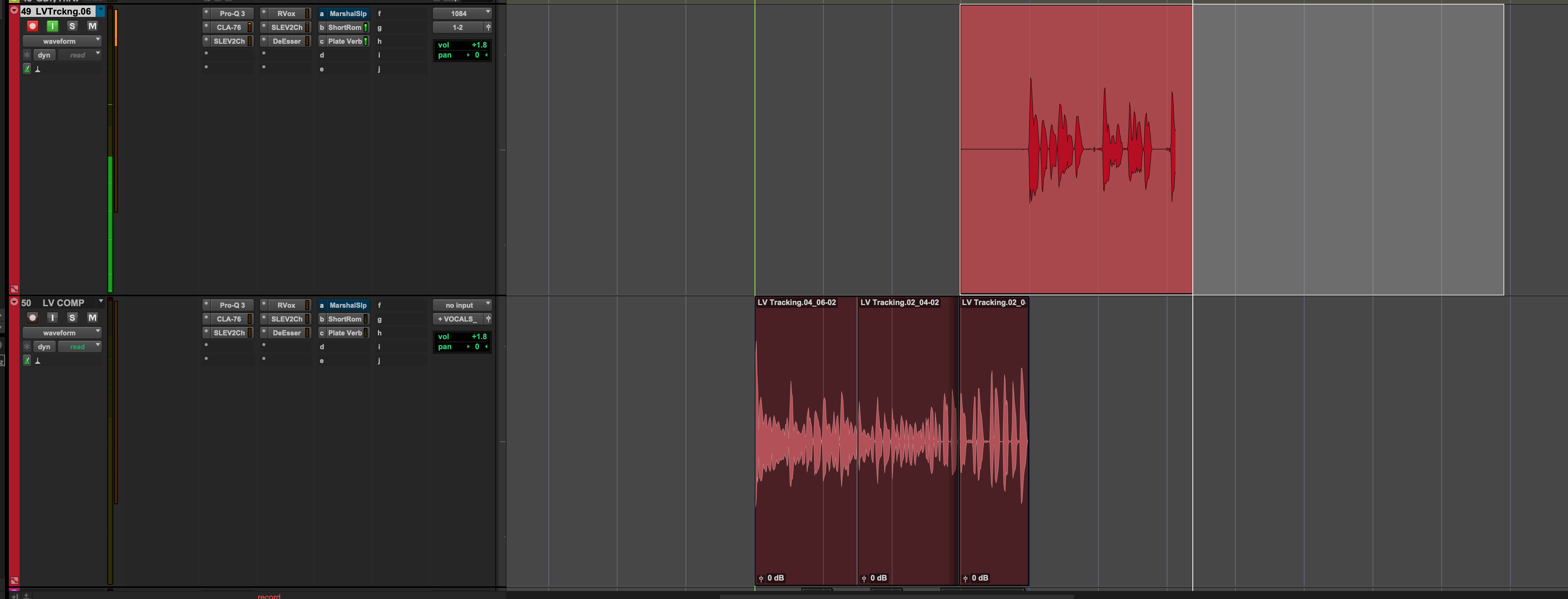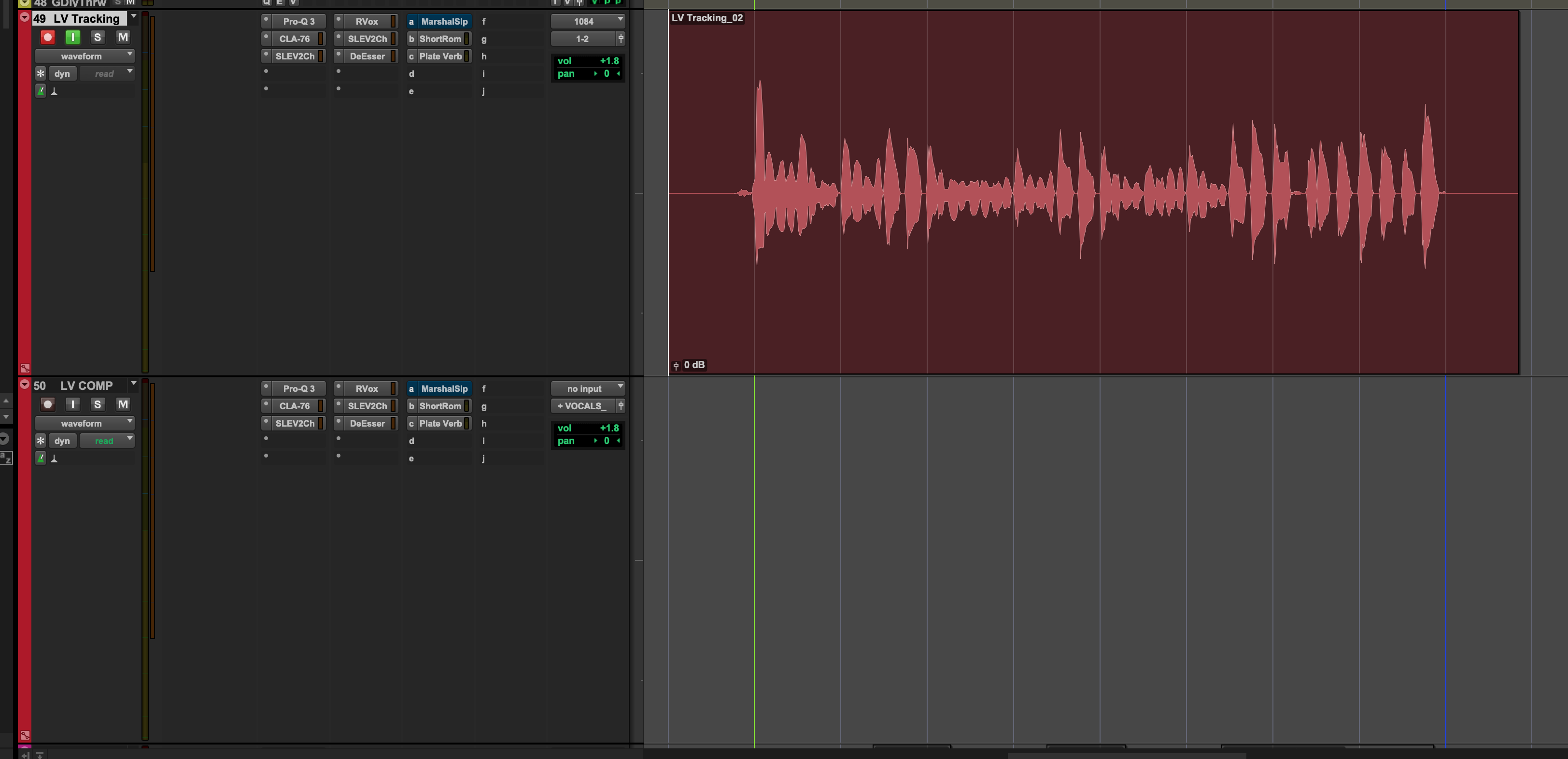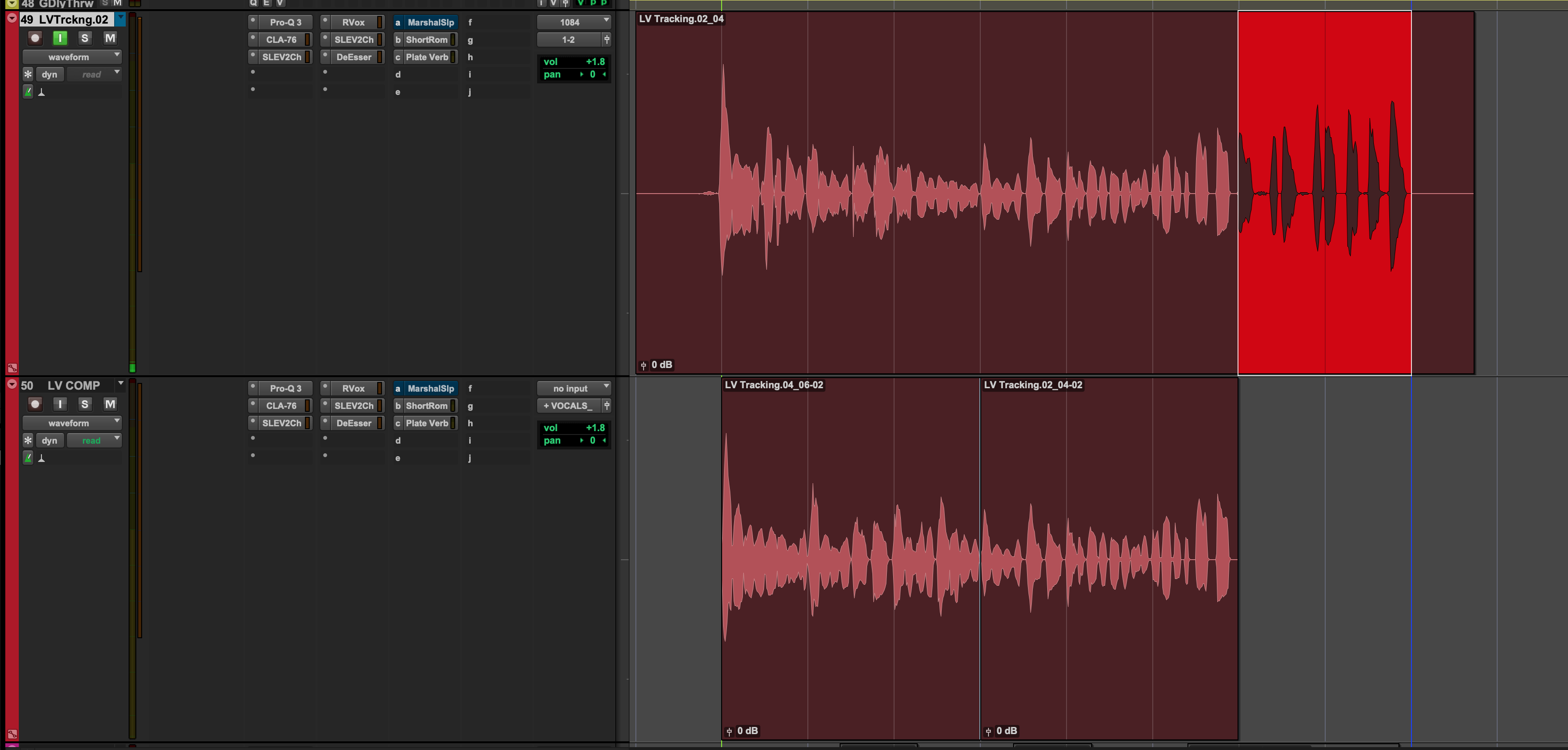
Vocal comping is the process of building a final performance from multiple takes. Digital multitracking has made it standard practice on nearly every record. In professional recording settings, such as the studios in ProStudioTime’s network, great comps come from clear decisions made during the session, not just tidy edits after it. Comping can be approached in many different ways, but this is one method that professional engineers and producers find both efficient and effective when working in the studio. Use this workflow to move fast without losing feel.
1. Take Notes While Recording
The most efficient engineers don’t leave everything to memory. While takes are being recorded, jot down quick notes on which ones felt strong or which specific sections stood out. Was the energy right on that second chorus? Did the phrasing click on the pre-chorus of take three? These small markers will save you hours later when hunting for the best moments.

2. Build a Working Comp on the Fly
Your working comp is your base layer. As new takes come in, start piecing together the best sections. This serves three purposes:
- It shows whether more takes are actually needed.
- It gives the artist and producer something tangible to connect with.
- It creates a reference point.
For example, if the second chorus you just recorded feels much stronger than the first, you may want to re-record that first chorus to match it.
Working comps keep everyone aligned and ensure the song keeps moving in the right direction.

3. Create a listen back track
In Pro Tools, playlists let you organise takes on the same track, but they don’t allow you to build a comp while recording. That’s why many engineers set up a separate “listen back” track underneath the record track. As you record, you can copy sections into this track to start building a reference comp in real time.
This approach has two advantages. First, it lets the engineer comp while recording new takes instead of waiting until later. Second, the listen back track can be played to the artist as a reference. For example, if you’ve comped chorus 1 and you’re moving on to record chorus 2, you can use the comp of chorus 1 as a playback reference to help the artist match tone, energy, and phrasing.

4. Listen back in the room
One golden rule: never let the artist or producer leave without hearing a version they’re happy with. Recording endless takes without listening back is a gamble. You won’t know if you actually have what you need until you check. Playing back a solid comp, even if rough, reassures everyone in the room and keeps the session moving with confidence.

5. Refine with care
After the session, you can comb through the takes in finer detail, but tread carefully. Over-comping can strip the life out of a vocal and undo the feeling that had everyone excited in the room. If the artist and producer left happy, don’t second-guess it by endlessly tweaking. That said, post-session is often the right time to clean up small timing in consistencies or subtle nuances you didn’t want to hold up the session with. Balance is key here.

Professional tips worth remembering
- Feel trumps precision. Always comp for feel first and worry about technical details second, unless a technical flaw makes a take unusable.
- Comp on the go. Don’t leave it until after the session. Building as you record ensures you know you’ve got what you need; otherwise, you risk having to return to the studio tore-record, wasting time and money.
- Know when to stop. If everyone’s happy, don’t undermine the session by chasing “better.”
Comping vocals is where a good performance becomes a great one.
Done carefully, the listener never knows it’s stitched together. They just feel the performance. And that’s the whole point.




